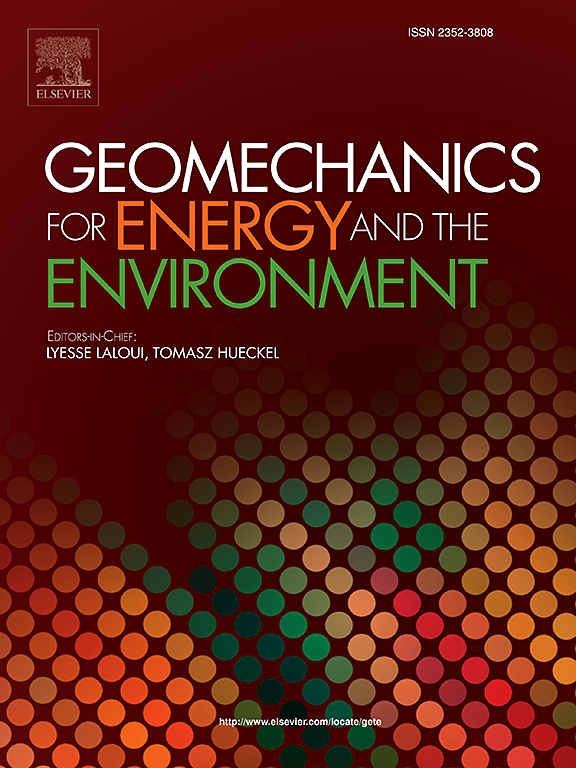Integrating geomechanical proxy models with data assimilation for energy transition applications
IF 3.3
2区 工程技术
Q3 ENERGY & FUELS
引用次数: 0
Abstract
This study presents a method to address the significant uncertainties in subsurface modeling that impact the efficiency of energy transition applications such as geothermal energy extraction and CO geological sequetsration. The approach combines a physics-based geomechanical proxy model with an ensemble smoother with multiple data assimilation (ES-MDA), aimed at enhancing uncertainty quantification through the integration of vertical displacement measurements from fluid production and injection. The data from wells is limited in spatial coverage, while these measurements offer extensive spatial information, improving the understanding of subsurface behavior by reflecting changes in reservoir pressure and temperature. The open-DARTS simulator for fluid flow and a geomechanical proxy are used to perform data assimilation with ES-MDA. By generating an ensemble of model realizations with varied permeability, calculating vertical displacements at the surface, and applying ES-MDA, we effectively identify the probability distribution of the vertical displacement of the model conditioned to observed subsidence data. Entropy is used as a statistical measure to quantify the reduction of uncertainty of subsurface models based on observations. Our approach was tested on a 2D conceptual and 3D realistic datasets, demonstrating its capability to provide data assimilation. This workflow represents an advancement in subsurface modeling, supporting informed decision-making in geothermal energy production and CO sequestration by offering an improved alternative for data assimilation and enhancing tools for uncertainty quantification.
求助全文
约1分钟内获得全文
求助全文
来源期刊

Geomechanics for Energy and the Environment
Earth and Planetary Sciences-Geotechnical Engineering and Engineering Geology
CiteScore
5.90
自引率
11.80%
发文量
87
期刊介绍:
The aim of the Journal is to publish research results of the highest quality and of lasting importance on the subject of geomechanics, with the focus on applications to geological energy production and storage, and the interaction of soils and rocks with the natural and engineered environment. Special attention is given to concepts and developments of new energy geotechnologies that comprise intrinsic mechanisms protecting the environment against a potential engineering induced damage, hence warranting sustainable usage of energy resources.
The scope of the journal is broad, including fundamental concepts in geomechanics and mechanics of porous media, the experiments and analysis of novel phenomena and applications. Of special interest are issues resulting from coupling of particular physics, chemistry and biology of external forcings, as well as of pore fluid/gas and minerals to the solid mechanics of the medium skeleton and pore fluid mechanics. The multi-scale and inter-scale interactions between the phenomena and the behavior representations are also of particular interest. Contributions to general theoretical approach to these issues, but of potential reference to geomechanics in its context of energy and the environment are also most welcome.
 求助内容:
求助内容: 应助结果提醒方式:
应助结果提醒方式:


